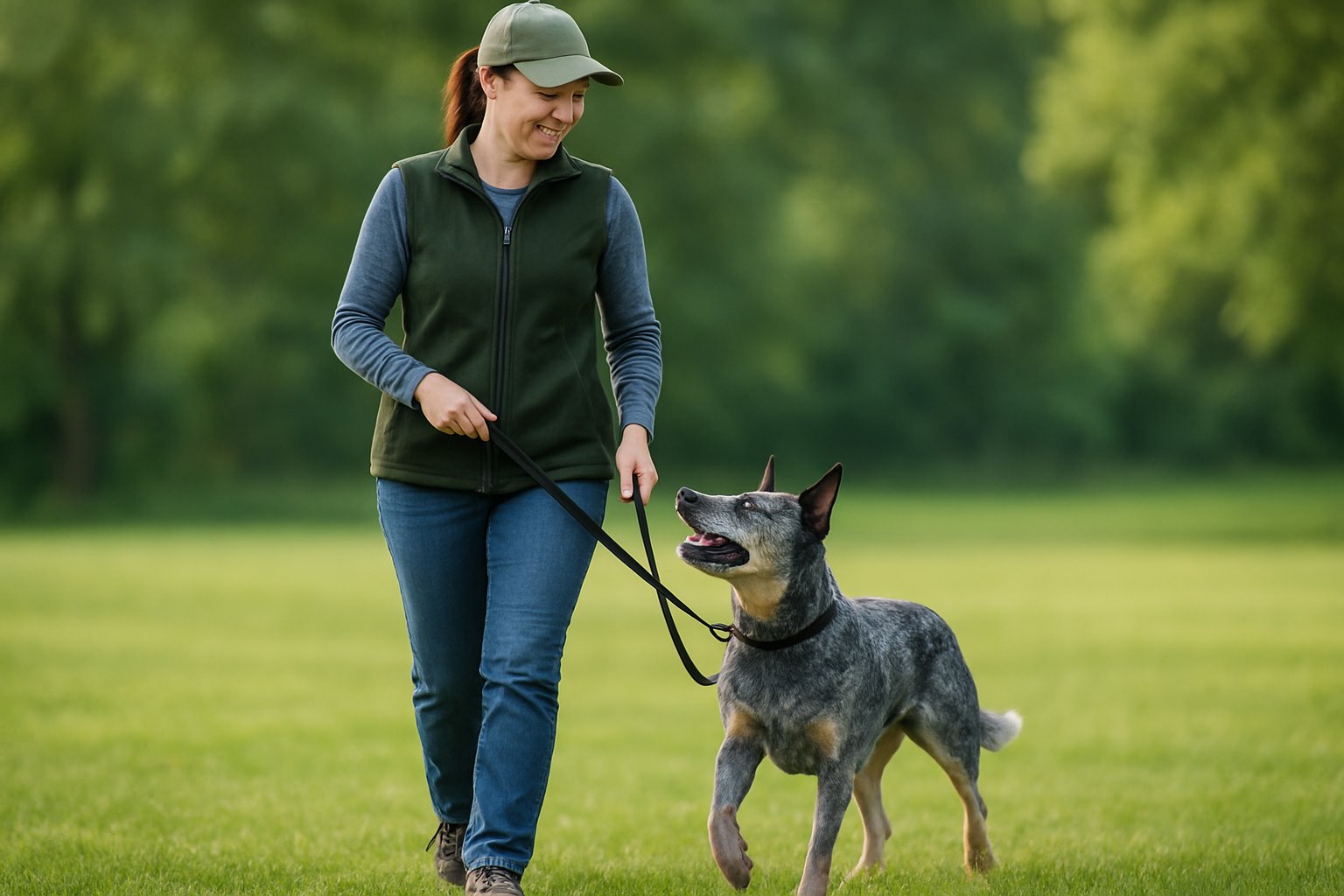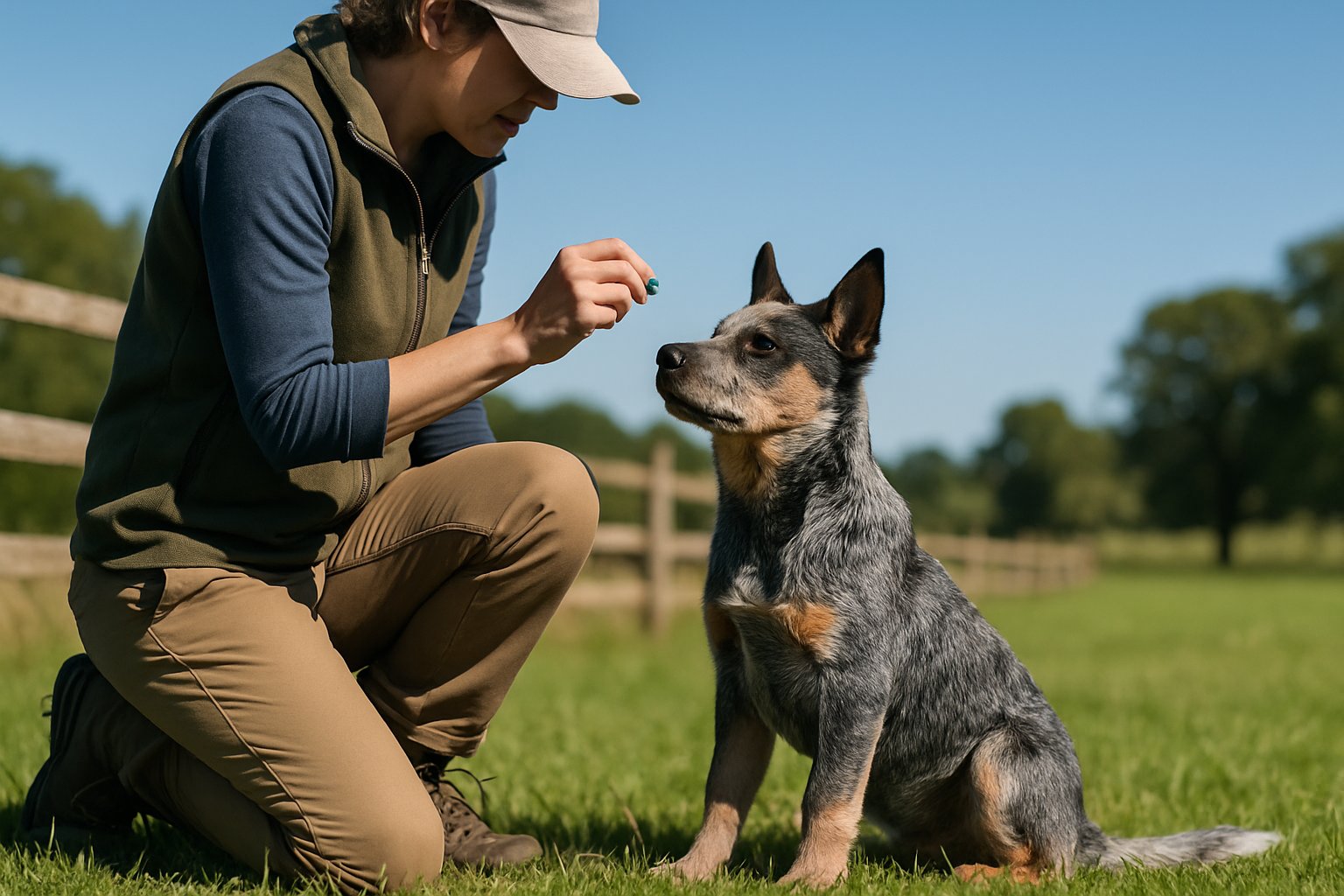Training your Australian Stumpy Tail Cattle Dog is an important step in making sure your dog grows into a well-behaved and happy companion. This breed is smart, energetic, and thrives when given the right guidance.
Learning proven training techniques will help you understand your dog’s unique needs and build a strong bond. With the right approach, you can set your Stumpy Tail Cattle Dog up for a lifetime of success.
1. Start training at six months for best results
- Begin training your Australian Stumpy Tail Cattle Dog when they reach six months old. At this age, your dog is mature enough to understand commands but still young enough to learn new behaviors quickly.
- Early training helps your dog develop good habits and prevents stubbornness from setting in. Waiting too long can make training more difficult, as older dogs may become set in their ways.
- Consistent training sessions starting at six months take advantage of your dog’s intelligence and eagerness to learn. This breed responds well to clear, simple instructions and positive reinforcement.
- Focusing on training at this stage helps lay a strong foundation for future learning and keeps your Stumpy engaged and happy. See more practical tips on training your Australian Stumpy Tail Cattle Dog.
2. Use positive reinforcement like treats and praise
When training your Australian Stumpy Tail Cattle Dog, positive reinforcement is one of the most effective tools you can use. This breed responds well to encouragement and clear communication. Reward your dog with treats, gentle praise, or playtime whenever it listens to a command or shows good behavior. These rewards help your dog understand which actions you want it to repeat.
3. Incorporate agility drills to engage high energy levels
- Australian Stumpy Tail Cattle Dogs are high-energy and bred for stamina. This means they need more physical activity than many other breeds. Regular exercise and mental challenges help keep them healthy and content.
- Agility drills are a great way to channel your dog’s drive and energy. Set up a simple agility course in your backyard with jumps, tunnels, and weave poles. Introduce each obstacle one at a time and use treats or toys to motivate your dog.
- Practicing agility drills boosts both physical fitness and mental alertness. It also builds trust between you and your dog. Dogs who get plenty of stimulation through agility tend to show fewer behavioral problems. For more on the benefits of agility for this breed, read about Australian Cattle Dog agility training.
- Keep training sessions fun and positive. Short daily drills are often more effective than long sessions. This approach helps prevent your dog from becoming bored or frustrated.
4. Practice consistent leash walking to control pulling
Leash walking is important for your Australian Stumpy Tail Cattle Dog. This breed is active and smart, so they can easily develop bad habits like pulling if you are not consistent. Start by using a strong, comfortable leash and collar. Keep your dog at your side and use simple commands, such as “heel” or “let’s go.” When your dog begins to pull, stop moving right away.
5. Introduce crate training early to aid housebreaking
Starting crate training early helps your Australian Stumpy Tail Cattle Dog learn where to rest and when to go outside for bathroom breaks. Crate training provides a safe space for your dog, making housebreaking easier and less stressful for both of you. Use the crate as a quiet place, not a punishment. Place some bedding and a few toys inside to make it comfortable and inviting. Always allow your puppy to explore the crate at their own pace.
6. Use a varied vocabulary to keep commands clear and engaging
When training your Australian Stumpy Tail Cattle Dog, it helps to use a mix of words. This keeps your commands interesting and stops your dog from getting bored. Try changing your tone as well as your phrases to grab your dog’s attention. A broader vocabulary can also help your dog learn to listen in different situations. For example, teaching “sit” with both a hand signal and words can make your dog more responsive. This approach builds flexible habits that work even in noisy or distracting places.
7. Avoid punishment-based methods to prevent fear and aggression
- Using punishment or harsh discipline during training can cause more harm than good for your Australian Stumpy Tail Cattle Dog. Punishment-based methods, like yelling or physical force, often increase stress and fear in dogs. Over time, this can lead to defensive or aggressive behavior.
- Instead, focus on guiding your dog’s behavior through positive reinforcement. Offer treats, praise, or affection when your dog shows the right behavior. This helps your dog learn faster and builds trust between you.
- Experts recommend avoiding all forms of corporal punishment and shaming. These approaches do not solve the root cause of unwanted behavior and can damage your relationship with your dog.
- Your Australian Stumpy Tail Cattle Dog will respond best to clear boundaries, patience, and encouragement. Use gentle corrections and redirection if needed, but always avoid negative or harmful techniques. This approach helps prevent fear and aggression, leading to a well-behaved and confident companion.
8. Socialize your Stumpy with other dogs and people regularly
Early and ongoing socialization is important for your Australian Stumpy Tail Cattle Dog. Exposure to different people, environments, and animals helps your dog learn how to behave in a variety of situations. This process reduces the risk of shyness, anxiety, or aggression as your dog matures. Start socializing your puppy as early as possible. Invite visitors over, schedule playdates with friendly dogs, and take your Stumpy to new locations. This will help your dog get used to new sights, sounds, and scents.

9. Address excessive barking with quiet command training
Excessive barking is common in Australian Stumpy Tail Cattle Dogs. Their strong herding instinct and high energy can make them quick to sound alarms. Teaching the quiet command can help you manage barking in a calm and positive way. Start by waiting for your dog to bark. Once they do, say a command like “quiet” in a firm, calm voice. When your dog stops barking, even for a second, reward them with a treat and praise. Repeat this process so your dog learns that being quiet gets your attention.
10. Focus on obedience to reduce jumping and leash pulling
Teaching your Australian Stumpy Tail Cattle Dog basic obedience is essential if you want to cut down on problem behaviors like jumping and leash pulling. Obedience commands give your dog structure and help them understand what you expect during walks and greetings. Start by practicing commands like “sit,” “stay,” and “heel” in a quiet area. Use treats or praise right away when your dog follows directions. This helps your dog focus on you instead of distractions around them.




